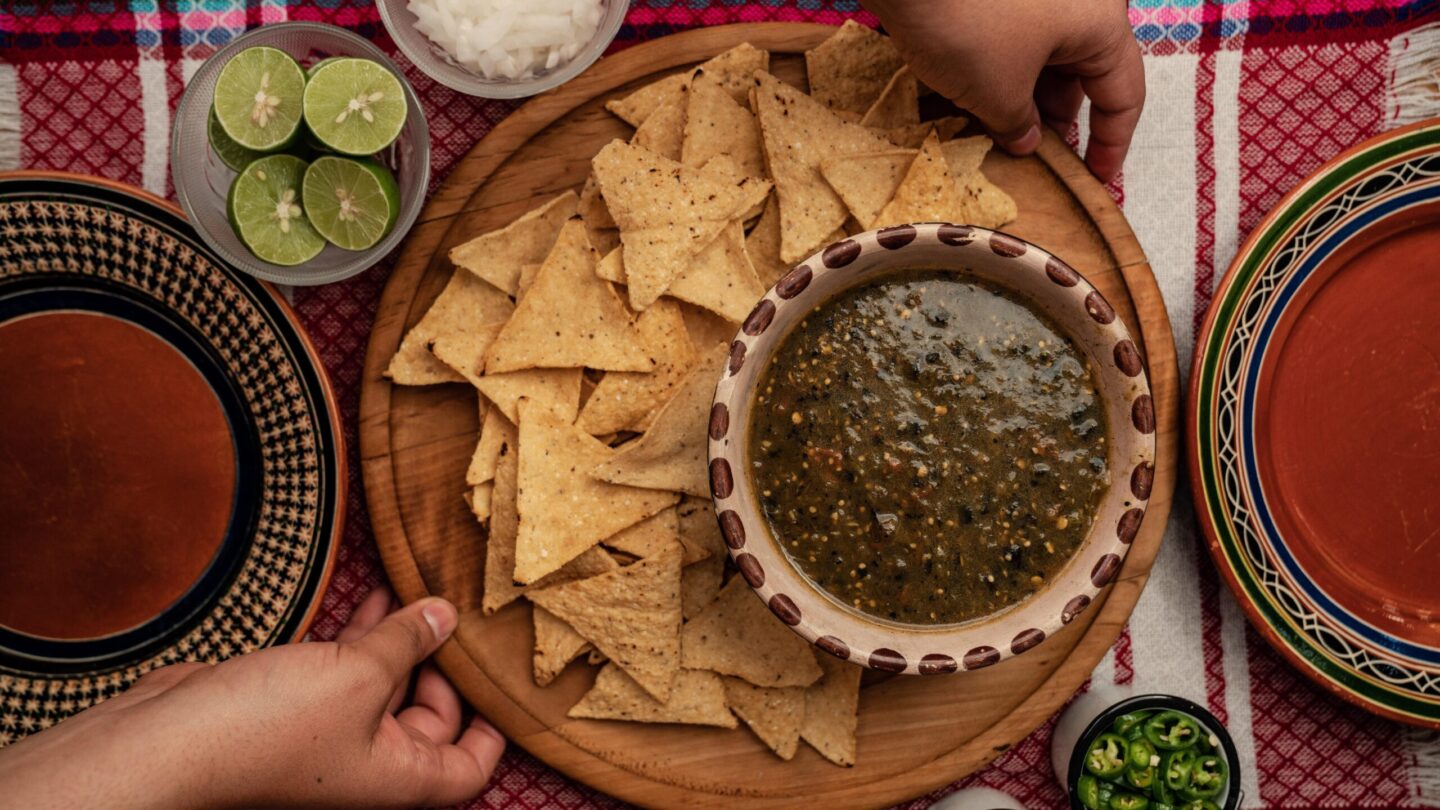In WABE’s series “Atlanta’s Savory Stories,” our food contributors, food historian Akila McConnell and chef Asata Reid bring us histories and recommendations from Atlanta’s diverse culinary landscape.
September is Hispanic and Latinx Heritage Month and Reid and McConnell prepared a banquet of topics to discuss relating to Hispanic and Latinx food traditions and the many Atlanta eateries showcasing their delights.
To begin the conversation, McConnell outlined some helpful distinctions: “Hispanic” identifies a person of a Spanish-speaking culture or who has roots in a Spanish-speaking country. “Latinx” refers to someone of Latin-American culture or with roots in a Latin-American country. “Chicano” or “Chicana:” someone of Mexican-American heritage. The terms aren’t interchangeable and describe unique groups of communities with complex colonial histories and relationships with indigenous cultures of the Americas. With such a grand swath of cultures represented in Hispanic and Latinx Heritage Month, our “Savory Stories” guides decided to narrow today’s focus on the cuisines of Mexico and the Caribbean.
No discussion of the food history of the Americas can even begin without talking about corn. McConnell explained the fascinating, 10,000-year-old invention of corn – yes, indigenous farmers of Southern Mexico invented the plant we know as corn – to curious Mexican cuisine lovers.
Its ancestor, the inedible wild grass teosinte, was cultivated over generations into the rainbow of varieties of edible maize that became the staple food of the land. “Modern scientists have tried to duplicate what these indigenous people did, and they have been unable to successfully do this in the way that these in indigenous people converted this grass into corn,” said McConnell.
Among countless other applications, Mayans and Aztecs used their versatile corn to make a fine-ground dough called masa. As early as 8,000 B.C.E., these cultures were known to pack meat and vegetables into the dough, which they wrapped in leaves and cooked in hot ashes. The delicious wrapped corn dumplings remain ubiquitous and beloved to this very day, known as tamales. Just as ancient is the tortilla, invented by Aztecs as an easily transportable, nutritious corn flatbread.
Chef Asata Reid’s local Caribbean and Mexican food recommendations:
El Super Pan, Ponce City Market – “The mofongo is a Puerto Rican national dish, and it’s mashed green plantain stuffed with sofrito or pork, and a perfect example of this fusion cuisine… Those bowls of mofongo just stole my heart. It is so top-notch here, and you can get that with the roast pork or the sofrito chicken or the shrimp ajillo; all of it’s delicious.”
Havana Sandwich Shop, Buford Highway – Established in 1976, Atlanta’s first full-menu Cuban restaurant. “If you are here, it’s for the sandwiches, the empanadas, the homestyle Cuban plates. This is honest, straightforward Cuban food, like you rolled up in someone’s abuela’s house, right down to the desserts and the batidos – which are milkshakes if you haven’t had one.”
Papi’s Cuban Grill, Midtown – “The standouts for me: the traditional Cuban yuca con mojo. For some reason, I love and crave that dish. The lechon asado plate – again, we’ve got that slow roasted pork and Rey’s Cuban sandwich.”
El Rey Del Taco, Buford Highway – “El Rey is exactly what pops into my mind when someone says, ‘Hey, let’s go get some Mexican.’ Big plates, showcasing hospitality at its finest. It’s not fancy, but it is all about the food…. house-made fresh tortillas and salsa, which, that’s how I measure the standard of a restaurant.”
Patria Cocina, Grant Park – “The patio is large and shaded, and the bar represents tequila, lots of tequila, and mezcals that are just authentically Mexican. They also have seasonal cakes, homemade flan and churros with ice cream… but what I really love about Roxana and Octavio, and this place, is the hospitality.”
Supremo Taco, Reynoldstown – “Each taco has a distinct flavor and personality. The al pastor has tender pork with charred edges and juicy pineapple. Carne asada has some nice depth and smoke to it that you just don’t find everywhere. The aguachile features shrimp ceviche-style on a crisp tostada… the barbacoa has lingering, I’m going to make up a word, ‘aromaticness’ from the consommé that the lamb is cooked in, and it just lingers on your palette.”
Chef Reid’s favorite tomatillo salsa techniques:
– Gather fresh tomatillos, white onion (not sweet onion), garlic, cilantro and lime, as well as fresh peppers like serrano or jalapeño, depending on your heat tolerance.
– Method 1: Place tomatillos, onion, garlic and peppers in a saucepan with just enough water to cover. Boil until the tomatillos are tender and light green in color. Use a slotted spoon or strainer to transfer the ingredients to a blender or food processor, saving the cooking liquid. Blend to your desired consistency, adding the liquid to thin during blending. Add cilantro, lime, and salt to taste. Pulse until well combined and serve.
– Method 2: Line a baking sheet with parchment paper. Place the onion, tomatillos, garlic and peppers on the sheet, drizzle with olive oil, and lay under your oven set to “broil” for about seven minutes; tomatillos should blister and become well-charred. Combine broiled ingredients in a blender and blend to your desired consistency. Add cilantro, lime, and salt to taste, pulse, and serve.










